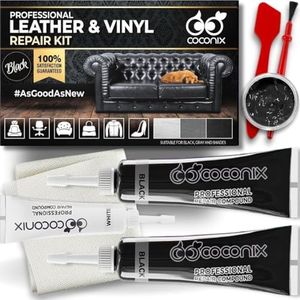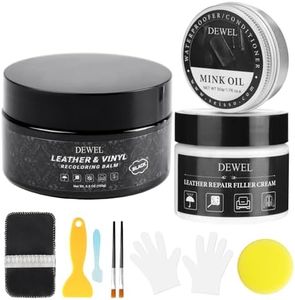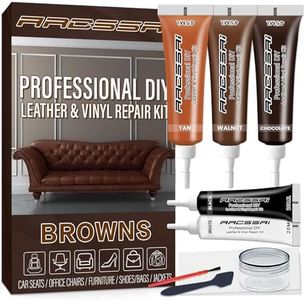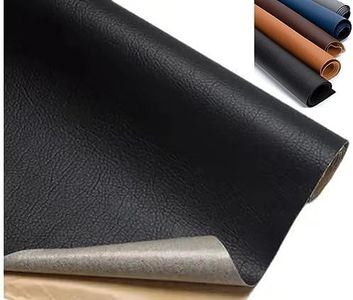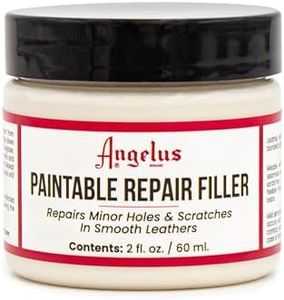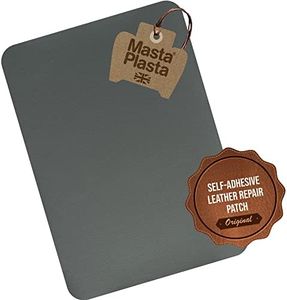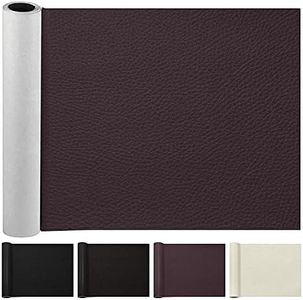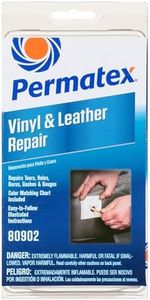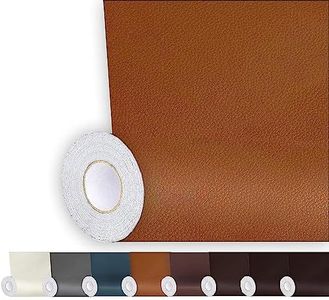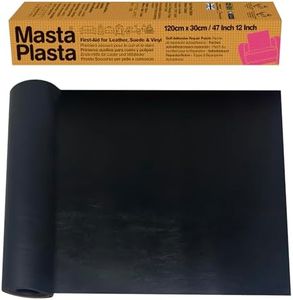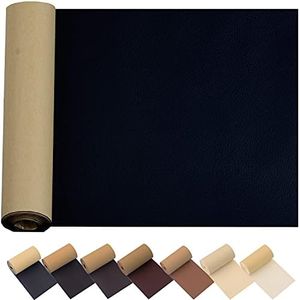We Use CookiesWe use cookies to enhance the security, performance,
functionality and for analytical and promotional activities. By continuing to browse this site you
are agreeing to our privacy policy
10 Best Leather Repair Fillers
From leading brands and best sellers available on the web.Buying Guide for the Best Leather Repair Fillers
When choosing a leather repair filler, it's important to match the product's capabilities to the type of repair you need to make. Leather repair fillers are used to fix cracks, holes, and scratches in leather items like sofas, car seats, and jackets. The key is to select a filler that blends well with your leather, adheres properly, and gives a finish that looks natural. Consider the type of leather you need to repair, the extent of the damage, and how visible the repair will be. Always follow the instructions and test the product on a hidden area to make sure it works well with your item.Adhesion StrengthAdhesion strength tells you how well the filler will stick to leather surfaces. Strong adhesion is crucial for making a repair last, especially for high-use items. Fillers with weak adhesion may peel or crack after a short time. Typically, fillers are formulated for either minor cosmetic repairs or more durable fixes; some work better for deep cracks or holes, others for surface level scratches. If you're repairing a spot that will be flexed or used often, look for a product that specifically mentions flexibility and strong binding to leather. If it's a display piece or less-used item, a basic filler may suffice.
Flexibility After DryingLeather needs to bend and flex, so the filler you choose should also remain flexible after it dries. Some fillers become very stiff, which can cause them to break or crack as the leather moves. Flexible fillers are designed for repairs in areas where bending and movement happen, like seats and armrests. If your repair spot bends a lot, make sure the product says it's flexible or designed for soft leather; for stiff, decorative leather, flexibility is less important.
Color CompatibilityColor compatibility is about how well the filler matches your leather's color. Some fillers come in a range of colors, while others are neutral and can be tinted with dyes or paints. This is important because a poor color match will make the repair obvious. If you need a seamless fix, look for a product that can be easily dyed or tinted. For hidden or less visible repairs, color may matter less, so a basic shade might do the job.
Drying and Curing TimeDrying and curing time tells you how long it takes for the filler to set before you can use the leather again. Fast-drying fillers are convenient for small, quick repairs, while more robust fillers may take longer to cure for a stronger finish. Consider how quickly you need the item back in use; if time is critical, pick a quick-drying formula. For durability or thicker repairs, be prepared to wait for a slower-curing, stronger option.
Application MethodThe way you apply the filler can make a difference in the final result. Some fillers are spread on with a spatula or palette knife, while others can be pushed in with your finger or a soft tool. Thicker fillers are best for large holes or deep cracks, while thinner, smooth fillers suit shallow scratches. Choose a method you are comfortable with; if you prefer not to deal with tools, find a product that allows for easy application by hand. If the repair is detailed, a filler that can be smoothed finely will give a more professional look.
Finish and TextureThe finish and texture of the dried filler should match your leather: matte, glossy, or satin. Strong fillers can sometimes dry with a rough surface, but a repair is best if it blends seamlessly in look and feel. Think about how the leather is finished—if it's shiny, pick a filler that can be polished or coated for gloss. If it's matte, make sure the filler dries similarly or can be sanded smooth for the right touch.
